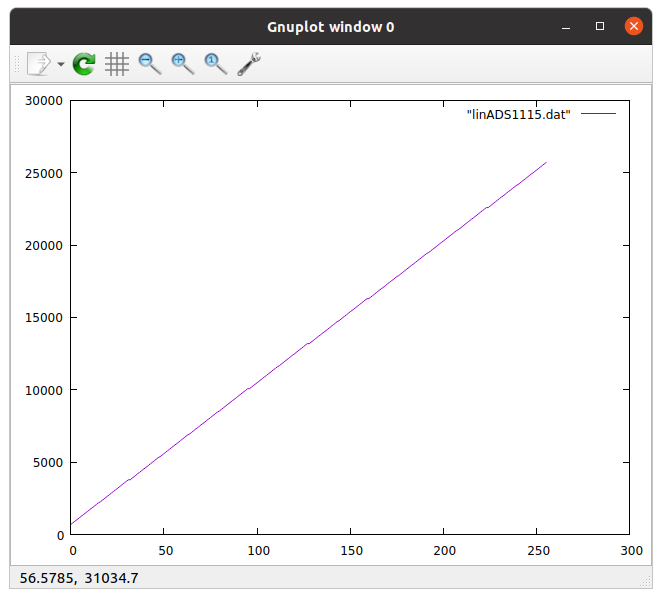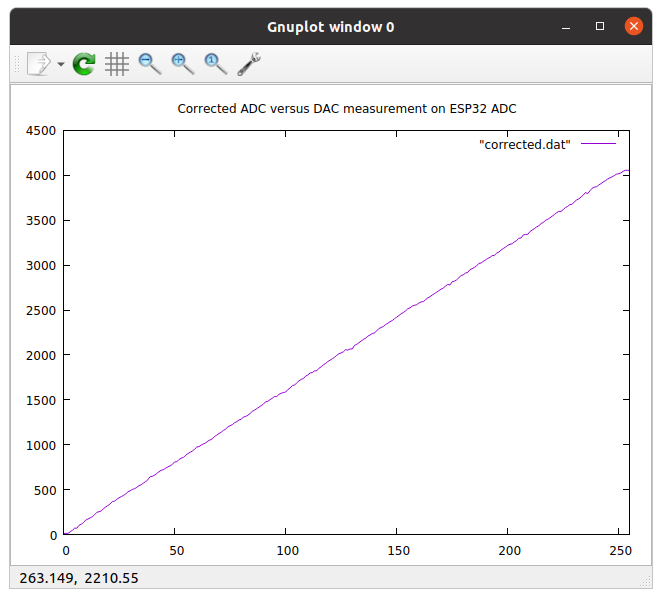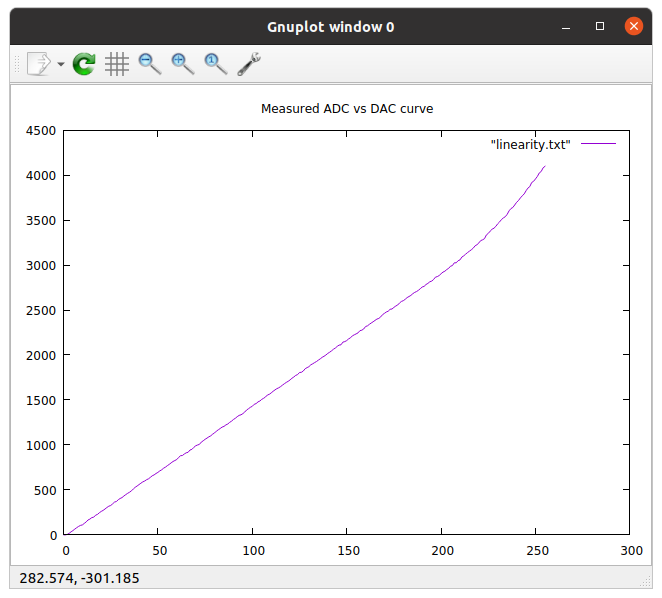
Difference: ADCAndDAC (3 vs. 4)
Revision 42020-07-31 - UliRaich
| Line: 1 to 1 | ||||||||||
|---|---|---|---|---|---|---|---|---|---|---|
Exercise 9: Analogue to Digital (ADC) and Digital to Analogue (DAC) conversionIntroduction | ||||||||||
| Line: 16 to 16 | ||||||||||
Checking linearityIf we connect the DAC output to the input of an ADC channel and we slowly ramp up the DAC value from 0 to its maximum and we read back the signal level with the ADC, then we expect a perfectly linear curve. This is true under the condition that both, the DAC and the ADC are perfectly linear. | ||||||||||
| Changed: | ||||||||||
| < < |
| |||||||||
| > > |
| |||||||||
Verifying linearity with an external ADS1115 | ||||||||||
| Line: 28 to 28 | ||||||||||
| ||||||||||
| Changed: | ||||||||||
| < < | A driver MicroPython driver for the ADS1115 is available making it very easy to use: https://github.com/robert-hh/ads1x15 | |||||||||
| > > | A driver MicroPython driver for the ADS1115 is available making it very easy to perform the check: https://github.com/robert-hh/ads1x15 | |||||||||
 | ||||||||||
| Added: | ||||||||||
| > > | Note the change in scale on the y axis. The ADS1115 is a 16 bit ADC while the ESP32 has only 12 bits. The maximum value on the y axis depends on the input voltage range selected. | |||||||||
| This clearly shows that the ESP32 ADC is the culprit! | ||||||||||
| Added: | ||||||||||
| > > | Correcting the non-linearityNow that we know that the DAC is nicely linear and it is the ADC introducing the non-linearity we can try to correct for it using our first DAC vs ADC measurement as calibration curve. If we can calculate the DAC value from the ADC output we can also calculate the corrected ADC value. For this to work we must invert (replace x by y and vice versa) the function adc = y = f(x) where x is the DAC value. This is the function of the first plot. Then we fit a polynomial to the inverted curve and finally we use this polynomial to correct the values read from the ADC. Here is a graph when fitting a polynomial of grade 5
 The fit gives up the coefficients (a..e) of the polynomial and we can use this to correct for linearity. Instead of returning the raw ADC value we enter it into the polynomial and return the calculated value multiplied by 16 to get 0..4096 instead of 0..256.
Here is the DAC versus ADC measurement on the ESP32 ADC after correction:
The fit gives up the coefficients (a..e) of the polynomial and we can use this to correct for linearity. Instead of returning the raw ADC value we enter it into the polynomial and return the calculated value multiplied by 16 to get 0..4096 instead of 0..256.
Here is the DAC versus ADC measurement on the ESP32 ADC after correction:
 | |||||||||
|
-- | ||||||||||
| Line: 45 to 62 | ||||||||||
| ||||||||||
| Added: | ||||||||||
| > > |
| |||||||||
View topic | History: r10 < r9 < r8 < r7 | More topic actions...
Ideas, requests, problems regarding TWiki? Send feedback

